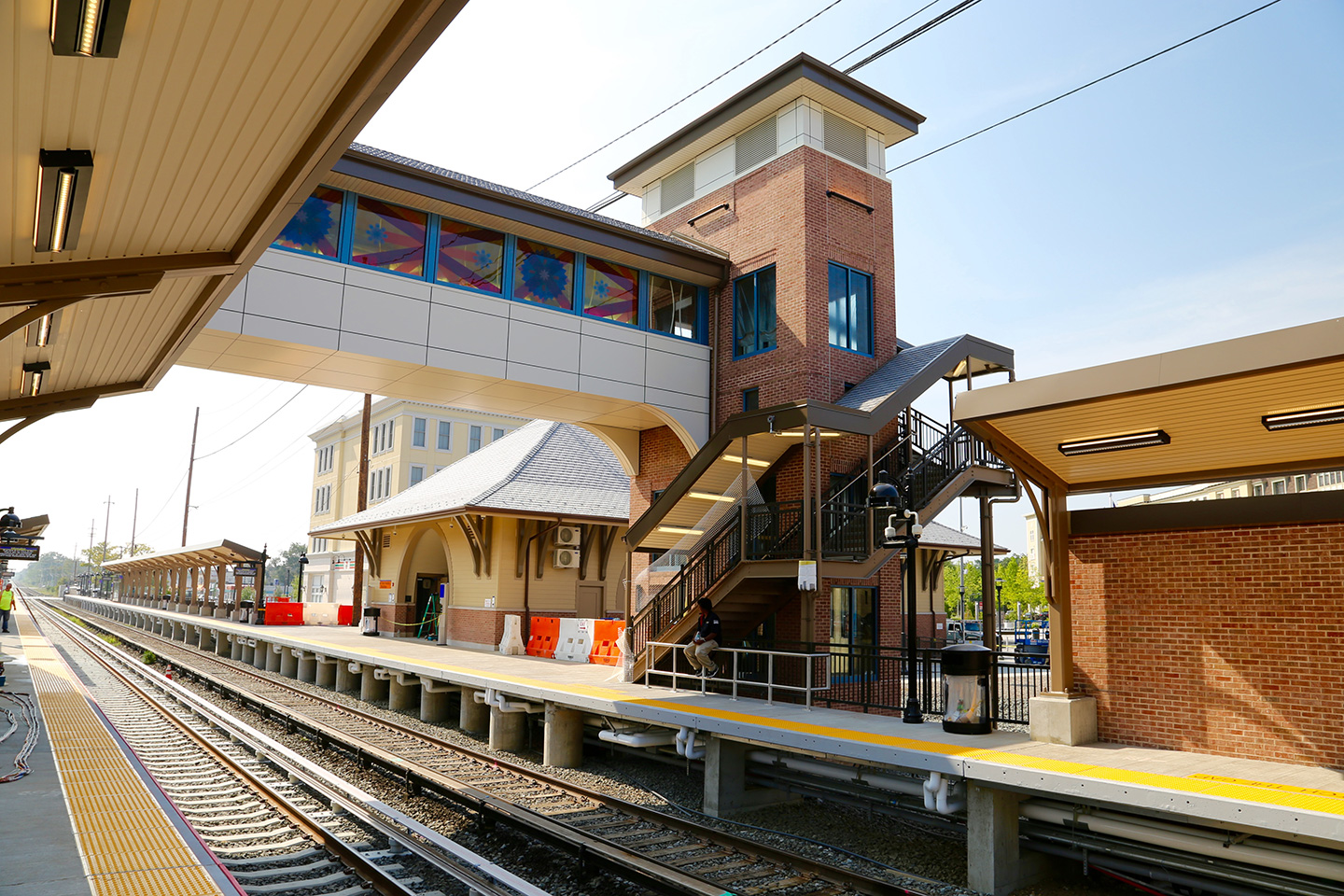As engineers, our project work in the design of heavy civil infrastructure requires a commitment to create projects that are functional and safe. We are asked to meet stringent design criteria, budgets, and schedules, and often, to interface with stakeholders and communities to keep them informed—especially during construction.
The designs that support major transportation hubs must give attention to another important design interface consideration—the transition pathway. The transition pathway design, defined as the route from arrival/departure to ground transportation, requires thoughtful consideration of every traveler who may undertake this journey, navigating facilities such as parking garages, pedestrian bridges, tunnels, transit stations, and terminals to reach their final port of call.
An old adage proclaims, 'If you’re there early, you’re on time.' But whether you’re early or late, a properly designed transition pathway can make all the difference in your trip being a positive experience."
Bob Gallup
Point to Point, ASAP
When you’re traveling, you often want to get to the point of departure as soon as possible. An old adage proclaims, “If you’re there early, you’re on time.” But whether you’re early or late, a properly designed transition pathway can make all the difference in your trip being a positive experience. The traveler trip experience should be prioritized to create a safe and welcoming thoroughfare to the destination. Covered from weather and accessible (compliant with ADA), transition pathways must be well lit and designed for the proper width based upon use and volume with shared modes being appropriately spaced and identified.
Are Signs and Other Wayfinding Tools Easy to Find and Read?
Equally important is the opportunity to humanize the journey from the first moment of arrival. In the pedestrian space, wayfinding signage must be clear and direct, having consistent graphics, colors, and symbology. Messaging (both permanent and temporary) must be drafted for easy decision-making with continuance using symbology along the route of the pathway. Are signs and other wayfinding tools easy to find and read?
 The new Wyandanch Station, a successful design-build project for the Long Island Rail Road, features lively public art along the enclosed pedestrian bridge. The engineering team specified durable materials for minimal maintenance, along with an innovative snow-melt system along the boarding platforms. The use of prefabricated steel components helped accelerate the fast-track construction schedule.
The new Wyandanch Station, a successful design-build project for the Long Island Rail Road, features lively public art along the enclosed pedestrian bridge. The engineering team specified durable materials for minimal maintenance, along with an innovative snow-melt system along the boarding platforms. The use of prefabricated steel components helped accelerate the fast-track construction schedule.
Enhancing the Patron Experience
Ample signage that welcomes and orients visitors is imperative, but many major transit and airport authorities are also recognizing the potential to enhance the experience with lively graphics, custom lighting, signature branding, engaging public art, and other visual amenities. Additionally, customer-friendly technology, such as kiosks and WiFi, are being integrated into the arrival experience to minimize that “mad dash” through the plywood walls of construction. During construction, partitions can be themed to feature bold graphics, pointed messaging, and interpretive murals all aimed at enhancing patron experience. Public art can be integrated into the final design of corridors and other public spaces, creating a more pleasant and inspiring experience.
When designing infrastructure that supports travel, it’s always important to keep the traveler at the center of the project or “design as if you are the traveler.” During construction, that means that patrons still feel welcomed, and can easily and safely find their way—and if spare time permits, perhaps even enjoy the journey by experiencing public art or entertaining multimedia along the way. That high-quality experience is designed to continue when the project is completed. If we as engineers and designers do our jobs well, customers will be set to reach their final destination without the stress, confusion, or frustration we often associate with traveling.